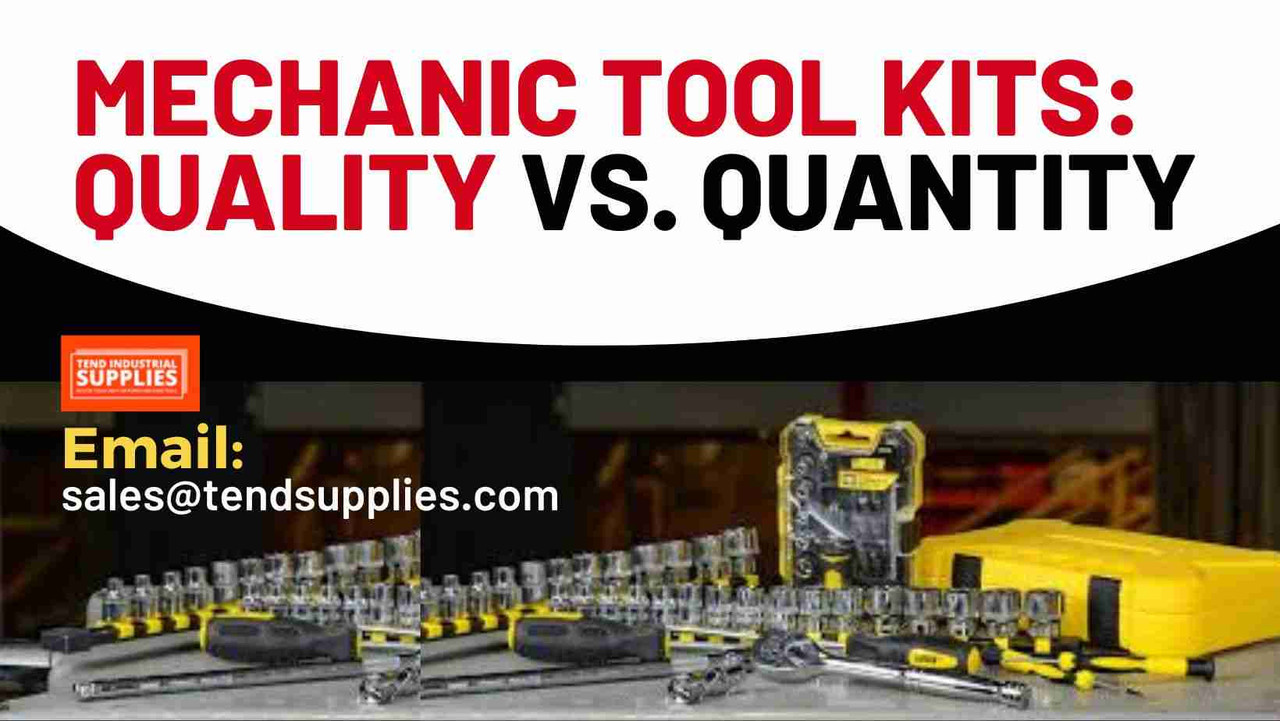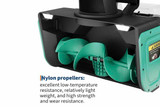Mechanic Tool Kits: Quality vs. Quantity - Making the Right Investment
For mechanic tool kits, the age-old debate of quality versus quantity continues to perplex both professionals and enthusiasts. Should you opt for a comprehensive set with numerous pieces or invest in fewer, higher-quality tools? This in-depth guide will explore the pros and cons of both approaches, helping you make an informed decision that aligns with your needs, budget, and long-term goals.
Key Takeaway
The choice between quality and quantity in mechanic tool kits is not always an either/or decision. The best approach often involves a strategic combination of high-quality essential tools supplemented by a broader range of good-quality options. By carefully assessing your needs, budget, and long-term goals, you can create a tool kit that perfectly balances precision, durability, and versatility for your specific situation.
Understanding the Quality vs. Quantity Dilemma
Before delving into the specifics, it's crucial to understand what we mean by quality and quantity in the context of mechanic tool kits:
Quality: Refers to the durability, precision, and overall performance of tools. High-quality tools are typically made from superior materials, have tighter tolerances, and offer better ergonomics.
Quantity refers to the number of pieces in a tool kit, which often includes a wide range of sizes and types to cover various applications.
Also, Read This Related Article: The Hidden Cost of Cheap Hand tools: Why Quality Matters
The Case for Quality
Investing in high-quality tools offers numerous advantages:
Durability and Longevity
- Premium materials resist wear and corrosion
- Better manufacturing processes ensure longer-lasting tools
- Potential for lifetime warranties on certain brands
Precision and Accuracy
- Tighter tolerances for more precise fits
- Reduced risk of stripping fasteners or damaging components
- Consistent performance over time
Ergonomics and Safety
- Better-designed handles and grips reduce fatigue
- Higher-quality materials provide better grip, even when oily
- Reduced risk of tool failure during use
Long-term Cost-Effectiveness
- Less frequent replacements needed
- Potential for better resale value
- Reduced downtime due to tool failures
Professional Reputation
- High-quality tools can enhance credibility with clients
- Demonstrates commitment to excellence in your work
The Argument for Quantity
On the other hand, opting for a more comprehensive kit with a larger number of tools has its own merits:
Versatility and Preparedness
- Wide range of sizes and types for various applications
- Reduced need to borrow or purchase additional tools
- Ability to tackle a broader range of jobs
Convenience
- All necessary tools in one kit
- Easier organization and transport
- Reduced time spent searching for the right tool
Cost-Effective Entry Point
- Lower initial investment for beginners or hobbyists
- Opportunity to identify most-used tools before investing in upgrades
Backup Options
- Spare tools are available if one is misplaced or borrowed
- Ability to lend tools without compromising your own work
Learning and Experimentation
- Chance to try various tool types and sizes
- Ideal for DIY enthusiasts exploring different projects
Factors to Consider When Choosing
To make the right decision between quality and quantity, consider the following factors:
Intended Use
- Professional mechanics may benefit more from high-quality, specialized tools
- DIY enthusiasts might prefer a wider range of tools for various projects
Frequency of Use
- Daily users should prioritize quality for longevity
- Occasional users might opt for more variety
Budget Constraints
- Consider long-term costs, not just initial investment
- Factor in potential replacements and upgrades
Specific Job Requirements
- Certain specialties may require high-precision tools
- General automotive work might benefit from a broader selection
- Work Environment
- Harsh conditions may necessitate more durable, high-quality tools
- Controlled environments might allow for a wider range of options
Personal Preference
- Some users prefer the feel and performance of premium tools
- Others may value having a tool for every possible situation
Storage and Portability
- Limited space might favor a more curated, high-quality selection
- Ample storage allows for larger, more comprehensive kits
Finding the Right Balance
For many mechanics, the ideal solution lies in balancing quality and quantity. Here are strategies to achieve this:
- Invest in High-Quality Core Tools
- Identify the most frequently used tools in your work
- Invest in premium versions of these essential items
- Consider professional-grade wrenches, sockets, and screwdrivers
- Supplement with Mid-Range Options
- Fill gaps in your kit with good quality, but not top-tier, tools
- Look for reputable brands offering value-oriented lines
- Use Budget Options for Rarely Used Tools
- For specialized or infrequently used tools, consider more affordable options
- Upgrade these as needed based on usage and wear
- Gradual Upgrade Strategy
- Start with a comprehensive, mid-range kit
- Systematically upgrade most-used tools to premium versions
- Replace worn or broken tools with higher-quality alternatives
- Mix and Match Brands
- Different brands excel in various tool categories
- Research and select the best option for each tool type
- Consider Modular Systems
- Some manufacturers offer expandable systems
- Start with essential high-quality pieces and add over time
- Leverage Warranties and Guarantees
- Many premium brands offer lifetime warranties
- Factor this into the long-term value equation
Analyzing Cost vs. Value
When comparing tool kits, it's essential to look beyond the initial price tag:
- Cost Per Use
- Calculate how often you'll use each tool
- High-quality, frequently used tools often provide better value over time
- Replacement Costs
- Factor in the likelihood and cost of replacements for lower-quality tools
- Consider warranty coverage and replacement policies
- Productivity Impact
- Assess how tool quality affects your work speed and efficiency
- Factor in potential income gains from using better tools
- Resale Value
- Quality tools often retain value better
- Consider potential return on investment if you decide to sell
- Hidden Costs
- Factor in potential costs from tool failures (e.g., damaged fasteners, project delays)
- Consider the cost of storage solutions for larger kits
The Impact of Technology on Tool Quality and Quantity
Advancements in manufacturing and materials science are blurring the lines between quality and quantity:
- Improved Manufacturing Processes
- Mid-range tools are becoming more precise and durable
- The gap between premium and standard tools is narrowing in some categories
- New Materials
- Advanced alloys and composites offer improved strength-to-weight ratios
- More affordable tools can now offer features previously found only in premium lines
- Smart Tools
- Digital torque wrenches and Bluetooth-enabled tools add new dimensions to quality
- These advancements can sometimes justify higher investments in individual tools
- Customization and 3D Printing
- The ability to create custom tools may reduce the need for extensive pre-made kits
- This trend could shift focus towards quality in core tools and customization for specifics
Expert Opinions and Industry Trends
To gain further insight, let's consider what industry professionals and trends suggest:
- Professional Mechanic Surveys
- Many professionals report a preference for fewer, higher-quality tools
- Emphasis on reliability and precision in daily-use items
- Tool Manufacturer Strategies
- Increasing focus on tiered product lines to cater to different market segments
- Development of "prosumer" categories bridging professional and consumer-grade tools
- Automotive Industry Changes
- Modern vehicles often require more specialized tools
- This trend may favor quality over quantity for specific applications
- DIY and Maker Movement Influence
- Growing interest in high-quality tools among hobbyists
- Increased awareness of tool quality across all user levels
Making Your Decision
After considering all factors, here's a framework to help you decide:
- Assess Your Needs
- List the types of projects you typically undertake
- Identify the most frequently used tools in your work
- Set a Realistic Budget
- Determine your initial investment capacity
- Consider your ability to upgrade over time
- Prioritize Essential Tools
- Invest in high-quality for your most-used items
- Be willing to compromise on less critical tools
- Research Brands and Options
- Read reviews from professionals in your field
- Compare warranties and after-sales support
- Handle Tools Before Buying
- Visit local suppliers to get a feel for different options
- Pay attention to ergonomics and build quality
- Plan for the Future
- Consider how your needs might evolve
- Choose a strategy that allows for growth and adaptation
Ready to build or upgrade your mechanic tool kit? Tend Industrial Supplies offers a carefully curated selection of premium and value-oriented tools to meet every need and budget. Visit our online shop at tendsupplies.com to explore our range of individual tools and comprehensive kits. For personalized advice on creating the perfect tool kit for your needs, contact our expert team at sales@tendsupplies.com. Invest wisely in your tools today and elevate your mechanic game to the next level!








